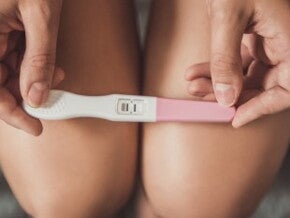
Ovulation Calculator Tool
When is the best time to conceive? Use our ovulation calculator to help you understand your 'fertile window'
While you're trying to conceive there's a lot of new things to learn as mum-to-be! This tool will help you keep track of the days you're most likely to be fertile. The tool is most useful if you are already keeping track of your menstrual periods. Your 'cycle length' is calculated as the number of days between the first day of bleeding of one period, to the first day of bleeding of the next.
How does tracking ovulation help with falling pregnant?
Tracking your ovulation period helps a woman know her ‘fertile window’ – the timeframe in which she is most fertile and likely to fall pregnant. This peak fertility window for most women is around 14-16 days after day 1 of your last period. Or alternatively, 12-14 days before your approaching period. For many women who have irregular periods, tracking ovulation can be tricky sometimes.
How does this ovulation calculator work?
Many people trying for a baby will use an ovulation calculator as an ‘ovulation estimator’ to help them estimate the most fertile days in a woman's menstrual cycle. It works by taking into account the average length of a woman's menstrual cycle and predicting the approximate date of ovulation. Calculations are made based on the assumption that ovulation occurs 13 days before your next period is due. This ovulation calculator is adaptable by allowing users to input their own cycle length.
How to use this ovulation calculator
Using the calendar provided, simply select the date of when your last period started (i.e. the first day of your period). Then enter the length of your usual menstrual cycle length. It is recommended that couples engage in sex every 2 days within this fertile window for the best chances of conception.
Are ovulation calculators accurate?
Although ovulation calculators are a fun tool for gaining an approximate insight into your most fertile period, it doesn’t calculate your ovulation date with guaranteed accuracy, nor is it an accurate assessment of your fertility. They are based on average cycle lengths and the assumption that ovulation occurs around 13 days before the start of the next period. However, individual menstrual cycles can vary, and factors such as stress, illness, or hormonal changes can affect the timing of ovulation. To increase accuracy, it is recommended to track additional signs of ovulation, such as changes in cervical mucus or basal body temperature. If you are concerned about your fertility or want to know more about their fertile window, you should see your doctor or a fertility specialist for individualised guidance.
If you're trying to get pregnant, you can start making positive changes to your diet & lifestyle now, and read some of our other useful articles, including ‘5 Tips For Getting Pregnant’ and ‘Ovulation – How can lifestyle increase my chances?’.
Note: The methods used by this application are based on an estimation taking into account information provided by the user and scientific knowledge/understanding in this area. This information is general in nature and it is not intended as medical advice or services. The use of this application does not replace any formal advice from your doctor or healthcare provider and you should consult your doctor for medical advice. The use of this application is at the entire discretion of the user and the user assumes any risk associated with using this application.
Frequently asked questions about ovulation and how to calculate your ovulation date
What is ovulation?
Ovulation is the release of a mature egg from a woman’s ovary, which for most women occurs once during each menstrual cycle. It is a key event in the reproductive process and typically happens around the middle of the menstrual cycle. Ovulation is necessary for pregnancy as the released egg can be fertilised by sperm. Tracking ovulation can help determine the most fertile days for conception.
How many days after your period do you ovulate?
A woman’s ovary releases an egg mid cycle – around day 15 of a 28-day menstrual cycle. The days are counted from the first day her period starts.
How do you calculate when you are ovulating?
To calculate when you are ovulating, you can use several methods. One approach is tracking your menstrual cycle length over several months. Ovulation typically occurs around 13-14 days before the start of your next period. You can also monitor changes in cervical mucus and track your basal body temperature (your body temperature when resting), You could also try ovulation predictor kits (OPKs) which detect the surge in certain fertility hormones that peak before ovulation. A combination of the above methods can provide a more accurate estimation of ovulation.
How many days after your period are you still ovulating?
Ovulation typically occurs around the middle of your menstrual cycle, which is around 14-15 days after your period starts, if you have a 28-day cycle. Of course the exact number of days can vary from person to person and cycle to cycle. Tracking methods such as monitoring your basal body temperature (resting body temperature) changes in cervical mucus, or using ovulation predictor kits can help identify when you are ovulating and provide a more accurate estimation of the days after your period when ovulation is likely to occur.
When is your fertility window?
The fertility window relates to the specific period within a woman's menstrual cycle when the chances of getting pregnant are highest. Typically, it includes the three days before and including the day of ovulation, when the egg is prepared for fertilisation.
Sources:
• Your Fertility Website. Accessed at https://www.yourfertility.org.au/everyone/timing
• Pregnancy, Birth & Baby Website. Accessed at https://www.pregnancybirthbaby.org.au/ovulation-and-fertility
Related articles



